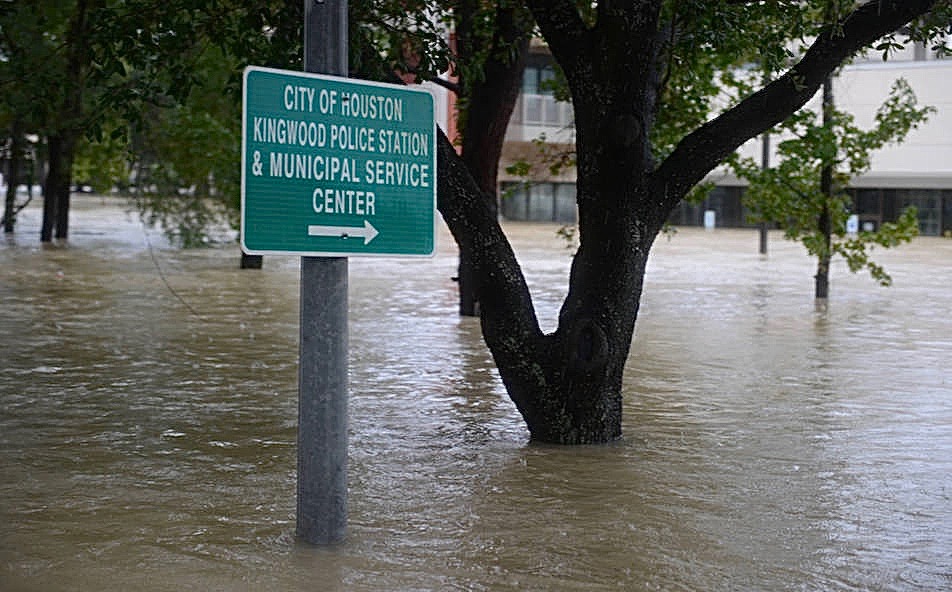By Bill Dawson
Texas Climate News
With its enormous rainfall totals in far-flung locations, Hurricane Harvey quickly became renowned – and cursed – as the wettest hurricane in U.S. history.
Now, the Texas state climatologist – Texas A&M University’s John Nielsen-Gammon – has produced a statistical portrait of the catastrophic storm that offers dramatic details showing just what “wettest” means.
The results of the analysis are eye-opening by anyone’s standard.
“Harvey is head and shoulders above all previous multi-day storms ever recorded in the continental United States,” according to Nielsen-Gammon, a regents professor of atmospheric sciences at Texas A&M.
The analysis included the largest storms since the 19th-century start of record-keeping in the contiguous U.S. and smaller storms east of the continental divide.
“I examined 18 different combinations of storm lengths and area sizes, from two days long to five days long, and standard areas from 1,000 square miles to 50,000 square miles,” Nielsen-Gammon said in an A&M release. “According to the preliminary data, Harvey was the worst in all but one.”
Ten of the 17 apparent records set by the Houston-flooding hurricane represented rainfall totals that exceeded previous record-holding storms’ totals in those categories by 20 percent or more.
Among Harvey’s 17 first-place rainfall rankings, the most astonishing to Nielsen-Gammon was the new record it set for the biggest five-day rainfall over an area of 10,000 square miles.
“For Harvey to average 34.72 inches over five days across that large an area is ridiculous. The previous all-time United States record, set in Texas back in 1899, was estimated at 21.39 inches. Harvey exceeded that record by 62 percent.”
Nielsen-Gammon’s storm comparison for the entire United States yielded this new Top 5 list of the largest five-day inundations over 10,000 square miles
1. 34.72 inches – Harvey 2017
2. 21.39 inches – Texas 1899
3. 20.50 inches – Beulah 1967
4. 18.37 inches – Louisiana 1940
5. 18.06 – Texas 1994
Among the other records that Harvey set, according to the “conservative” analysis by Nielsen-Gammon and his A&M colleague Brent McRoberts, were these:
- The biggest total five-day rainfall averaged over 1,000 square miles, compared to earlier storms in the central and eastern U.S. (Harvey’s average was 45.71 inches, while the previous record was the 1940 Louisiana storm’s 32.64 inches.)
- The biggest total five-day rainfall for the entire U.S., averaged over 50,000 square miles. (The average for Harvey was 19.05 inches. Hurricane Beulah, the 1967 storm that battered Mexico’s Yucatan peninsula and then parts of Texas, was previously in this category’s No. 1 spot with 16 inches.)
Those records were based on analyses of all areas getting the most rain from Harvey.
Separately considering only Harris County, home of Houston and the populous core of the Houston metropolitan region, Nielsen-Gammon found that the hurricane’s precipitation “was worse than the previous worst-case scenario” – average rain totals from 33.5 inches to 35.5 inches over five days.
Across the central and eastern United States, the previous record for an area of equivalent size was 30.5 inches.
Nielsen-Gammon’s analysis did not attempt to specifically calculate how much of Harvey’s rainfall was attributable to manmade global warming. But he told Texas Climate News that he concurs with climate scientists’ general expectation that the warming trend driving climate change is broadly responsible for more rainfall in such storms.
“History, theory, and models all point to an increase in the intensity of heavy rain” in tropical storms as a result of climate change, he said. “Given a heavy rainstorm, climate change has increased the amount of rainfall by a few percent.”
A pair of climate scientists – one at Penn State University and the other at the World Meteorological Organization – teamed with a climate communications specialist to describe the phenomenon this week in a Washington Post column:
Hurricanes get their energy from warm ocean waters, and the oceans are warming because of the human-caused buildup of heat-trapping gases in the atmosphere, primarily from the burning of coal, oil and gas. The strongest hurricanes have gotten stronger because of global warming. Over the past two years, we have witnessed the most intense hurricanes on record for the globe, both hemispheres, the Pacific and now, with Irma, the Atlantic.
We also know that warmer air holds more moisture, and the amount of water vapor in the atmosphere has increased because of human-induced global warming. We’ve measured this increase, and it has been unequivocally attributed to human-caused warming.
+++++
John Nielsen-Gammon is a member of Texas Climate News’ Advisory Board, serving in his capacity as a faculty member at Texas A&M.
Bill Dawson is the editor of Texas Climate News.

